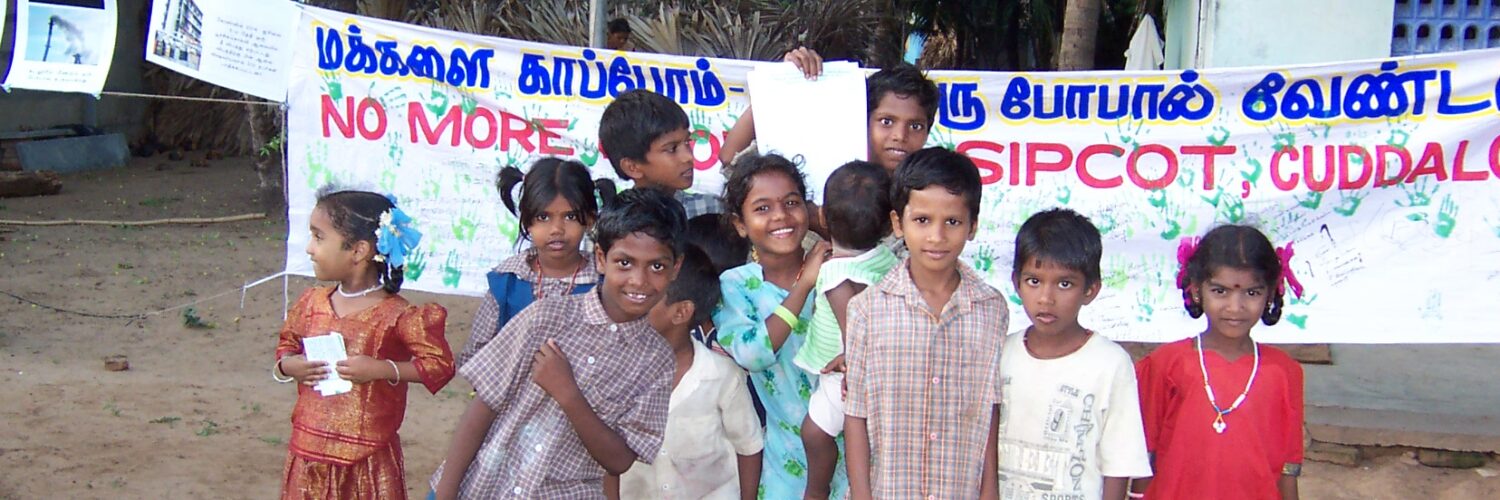CUDDALORE, December 19, 2015
S. PRASAD
Business Standard
Across the district, the trail of destruction is striking and the demand is just the same in both urban and rural areas — need for a robust mechanism comprising long-term measures to prevent flooding and put rain waters to optimal use.
Cuddalore bore the brunt of Tsunami that killed 640 people in December 2004 across the district’s 57-kilometer coastline and was subsequently hit hard by multiple cyclones including Nilam, and Thane. The cup of woe is brimming with the recent round of rains and floods.
Farmers’ woes have not receded with the fall in the level of flood waters. Ryots in Visur and Periyakattupalayam battle the double whammy of water-logging and huge mounds of river sand over the crops that are now reduced to just chaff.
Following the recent rains, huge tracts of paddy, cane and tapioca farm lands have now become striking red-sand farms going up to over five feet in several areas.
“We just do not know how we are going to remove such huge loads of sand from our lands even if water recedes completely,” said C Balu and G Govindaraju, farmers of Visur and Periyakattupalayam respectively in the hinterland of Cuddalore.
For a small farmer like R Padmanban of Sundaraavandi with a land-holding of just an acre, the problem is also about handling debts and making the ends meet when there will almost be no income.
Farmers have also been burdened with the loss of cattle, a significant aspect of their everyday household utility and income.
“Be it paddy, cane or cashew growers, they are just hit hard as the deluge has damaged crops at the flowering stages ahead of the harvest,” said President of the Cuddalore District Farmers Club Federation, P Ravindran.
In regions like Kalkunam and Kurinjipadi, he says there is “absolutely no chance for any crop harvest” as those areas were completely under water.
In Chidambram alone, the paddy yield could be less than 50 per cent of the usual though farmers had spent “fully (about Rs.21,000 per acre) expecting an optimum yield,” Ravindran said.
Stating that Cuddalore was hit either by floods or drought alternately, he urged the government to go in for a proactive and multi-pronged strategy to guard their interests.
Building check-dams wherever possible, creating ground-water aquifers, proper maintenance of water-bodies more support for techniques like drip-irrigation, liberal norms for claiming crop-insurance were among the priorities Ravindran listed.
According to Ravindran, the compensation announced by the state government for the farmers is “inadequate, insufficient given the extent of damage and even such a relief may not cover all the affected farmers.”
Jayalalithaa had announced a relief of Rs 13,500 for growers of paddy and other crops per hectare for damages of 33 per cent and above. For rain-fed crops, Rs 7,410 per hectare, for long-term crops Rs 18,000 will be provided per hectare, she had said.
Away from farmland, the infrastructure like houses and roads too have taken a hard knock.
Kondur village still reels under a thick sheet of flood water and for residents in localities like Purushottaman Nagar and Vilva Nagar along the Gedilam river the worry is about their safety if the river is in spate again.
“We never thought that the river would overflow crossing the bund and flood our neighbourhood. It was scary as flood waters went over 10 feet submerging houses,” said B Arivalagan, a small time dairy farmer living in Purshottaman Nagar for over two decades.
Residents like him want the government to increase the level of the bund and build them safe houses.
Asked on long-term plans to tackle disasters and ensure safety in the disaster prone Cuddalore district, Tamil Nadu Rural Development Secretary Gagandeep Singh Bedi said “in fact long-term plans are there.”
“Some of those plans were implemented after Cyclone Thane and we are consolidating further plans,” he told
Flood water is still being pumped out and let into a canal – using heavy pumps – in residential localities in and around Chavadi here.
For the villagers of Periyakattupalayam who have been housed in a relief camp after the flash floods on November 9 which washed away ten persons of the hamlet, the dream is to settle in pucca houses that could withstand natural calamities.
Huts of over 100 persons belonging to many families were washed away and the tenements of others were severely damaged making them unfit for use.
Reeling out statistics, Bedi said the government had taken both precautionary steps to tackle rains and took appropriate, requisite measures to tackle its aftermath.
De-silting of canals was among the steps he cited as part of precautionary initiatives.
“Power supply was restored in all the villages quickly and over 2000 electricity poles, 64 transformers, and 226 kilometers of wires, cables was replaced in a week’s time,” he said adding Public Works Department spent over Rs.23 crore in restoration of bridges.
Bedi said 473 generators were used to ensure drinking water supply when electricity supply had to be withdrawn due to rains.
As regards compensation for farmers enumeration is on to assess damages, he said.
Asked about the demand for safe housing of residents in Purushottaman Nagar, he said “we are planning to get them housing units in safe places, it is under active consideration.”
